 July 3, 2014 John E. Ross, KD8IDJ, Editor
| |||||||
ARRL Headquarters is Closed on Independence Day, July 4 ARRL Headquarters will be closed on Independence Day, Friday, July 4, and there will be no ARRL Audio News, W1AW bulletins or code practice on those days. ARRL Audio News will return July 11. We wish everyone a safe and enjoyable Fourth of July holiday! Convention Anticipation Peaking, Thousands Expected to Help Celebrate League's Centennial Some 4000 visitors are expected to be on hand when the ARRL National Centennial Convention kicks off in in a couple of weeks. The convention theme, marking the 100th anniversary of the League's founding, is "Advancing the Art and Science of radio -- Since 1914." ARRL President Kay Craigie, N3KN, will preside at the official opening ceremony and ribbon cutting on Friday morning at 8:30.
FEMA Administrator Craig Fugate, KK4INZ, will be a featured speaker at the July 17-19 event at the Connecticut Convention Center in Hartford. FEMA Chief Technology Officer Ted Okada, K4HNL, also will be attending the convention. Visitor have registered from all 50 US states and more than 30 countries. Among the attendees will be official delegations from Japan, England, Germany, Australia, and elsewhere. In addition, more than 100 vendors and exhibitors will be in the main Convention Center exhibit hall. Transportation will be available to shuttle convention registrants to Newington for tours of ARRL Headquarters and W1AW.
President Craigie will host a Presidents Breakfast at 7:30 on Saturday morning in the Convention Center ballroom. Several past ARRL presidents are expected to attend. Other notable visitors to the convention include Nobel Laureate Joe Taylor, K1JT, who will speak at noon on Saturday. The convention wraps up Saturday at 4 PM. ARRL CEO David Sumner, K1ZZ, will officiate at the closing ceremony. Convention registration remains open! The deadline for all banquet and meal reservations is Sunday, July 6. FCC Seeks to Raise Vanity Call Sign Fee to $21.60 The FCC is requesting to raise the Amateur Service vanity call sign regulatory fee from its current $16.10 to $21.60 for the 10-year license term. The $5.50 increase would be the largest vanity fee hike in many The FCC reported there were 11,500 "payment units" in FY 2014. The Commission said the vanity program generated $230,000 in FY 2013 revenue, and it estimated that it would collect nearly $248,000 in FY 2014. Interested parties have 30 days to comment on the NPRM. Changes in the vanity call sign fee typically take effect in late August or early September. ISS Contacts Put Smiles on Field Day Faces Some lucky -- and happy -- ARRL Field Day participants managed to snag a contact with NASA Astronaut Reid Wiseman, KF5LKT, operating from NA1SS on board the International Space Station. Wiseman, who just came aboard the space station this spring, seemed to have fun working the pileup. "Enjoyed ARRL FD 14," Wiseman Tweeted. "I operated from the ESA Columbus module. So many calls!" Wiseman used NA1SS on the standard VHF frequencies of 144.49 MHz up and 145.80 MHz down. It's not yet known how many stations he was able to contact.
Bob McCown, N3IYI, reported that the Goddard Amateur Radio Club's WA3NAN Field Day station in Greenbelt, Maryland, was among those that succeeded in contacting NA1SS during Field Day on Saturday afternoon. "The pass was almost over, way to the east over the Atlantic, so things were no doubt quieting down up there," McCown told ARISS International Chair Frank Bauer, KA3HDO, and others in a post-Field Day e-mail. "When I mentioned Goddard, he came back with 'Goddard! That's just down the road from where I grew up! Good to hear from you.'" Wiseman is from Baltimore. Patrick Stoddard, WD9EWK/VA7EWK, in Arizona also reported working Wiseman on June 28. "I worked NA1SS as it passed over the western USA at 1818 UTC for my first ARRL (and AMSAT) Field Day QSO," he said in an ISS Fan Club forum post. "First time working NA1SS during Field Day!" "Me too!!" rejoined Umesh Ghodke, K6VUG, who operated Field Day from the South Bay Amateur Radio Association (SBARA) KU6S site, He reported that NA1SS was full quieting in Fremont, California on the space station's first Field Day pass over the Pacific and the Midwest Saturday morning.
Stoddard said Wiseman was having occasional difficulty copying call signs. "With so many stations calling, and being on FM, that is understandable," he added. "I could hear times during the two North American passes where he was picking up a different call each time he was transmitting. He was going very quickly, knowing the limited time he had over the continent on each pass." Stoddard said he heard nothing on the ISS's 70 centimeter frequency, 437.55 MHz. In Elko, Nevada, Shane Wiggins, NV7SW, was operating as W7V for Elko Amateur Radio Club's 2014 Field Day operation. He managed to work NA1SS on one of the less-than-ideal passes. "Late into that pass I heard Reid come back to my call," Wiggins told ARRL. "There were many people huddled around my satellite station listening, and we all Another Field Day group that was fortunate enough to connect with the ISS were the Boy Scouts of Raymore, Missouri, Troop 32. "I bet the boys could be heard up in orbit even without a radio when Reid answered our call!" Scout Leader Jim Reicher, W0HV, said afterward. "Thanks to Reid Wiseman, NASA, and ARISS for encouraging him to try the ham station in the ISS Columbus module during Field Day!" Stoddard said. Read more. FCC Invokes "Red Light Rule" in Denying K1MAN License Renewal Application The curious Amateur Radio enforcement case of Glenn Baxter, now ex-K1MAN, of Belgrade Lakes, Maine, may be at an end. The FCC dismissed Baxter's long-standing license renewal application on June 23, invoking its "Red Light Rule," which gives the Commission authority to turn down a pending application if the applicant has an unpaid fine on the books. His Amateur Extra class license is now shown as "canceled" in the FCC's Universal Licensing System (ULS). Baxter was liable for a $10,000 FCC forfeiture stemming from violations over a period extending back several years.
The FCC Wireless Telecommunications Bureau dismissed Baxter's 2005 renewal application "without prejudice," which means that if Baxter wants to be licensed again, he must file a new application -- and the FCC could again invoke its Red Light Rule. Baxter's license expired in October 2005, but FCC rules gave him the authority to continue operating while his renewal application was pending. He lost that privilege, effective June 23. "If you are currently operating under authority provided by the Commission's rules based on your submission of [a renewal] application, you must immediately cease operation until such time as you come into compliance with the rules," the dismissal letter said. The legal history in the case is extensive. In 2011, the FCC issued a Hearing Designation Order to determine, among other things, if Baxter's Amateur Radio license should be renewed. According to the Order, "Baxter has apparently willfully and repeatedly engaged in unlawful Commission-related activities, including causing interference to ongoing communications of other amateur stations, transmitting communications in which he had a pecuniary interest, failing to file requested information pursuant to an Enforcement Bureau directive, engaging in broadcasting without communicating with any particular station, and failing to exercise control of his station." Read more. WRTC-2014 Receives ARRL Foundation Grant, Gets Marconi Boost World Radiosport Team Championship 2014 (WRTC-2014) will benefit from an ARRL Foundation grant. WRTC-2014 announced what it "With competitors coming from around the world, this is the perfect opportunity to showcase the radiosport aspect of Amateur Radio to the public," said WRTC-2014 Co-Chair Randy Thompson, K5ZD. Thompson said the ARRL Foundation grant has enabled WRTC-2014 to retain a media relations expert to help introduce the event to the media and to issue news releases in the home markets of US competitors. The ARRL Foundation was created in 1973 to provide grants supporting Amateur Radio activities and programs, and currently awards upward of 80 scholarships per year to young radio amateurs pursuing higher education. In another public relations coup, WRTC-2014 Co-Chair Doug Grant, K1DG, made a historical connection the weekend of June 21-22, when
he spoke via ham radio with Princess Elettra Marconi, radio pioneer Guglielmo Marconi's youngest daughter. She was at the Marconi Wireless site at Cape Cod National Seashore, where club station KM1CC had set up a station. During the 40 meter SSB contact, Princess Elettra told Grant that her father would have been proud to see that radio amateurs were continuing to advance his work in wireless communication. She went on to praise the WRTC-2014 event and its ability to promote international goodwill and operating skill. "What an honor, and a thrilling QSO," Grant said afterward. "It was exciting to bridge history from the very beginning of Amateur Radio to the many aspects of Amateur Radio that we enjoy today." Grant said Princess Elettra's acknowledgement that WRTC-2014 was helping to carry on the Marconi legacy added to the thrill. Grant was using the World Radiosport Team Championship club call sign, WR1TC. Assisting with the contact was Barbara Dougan, N1NS, the trustee of the Marconi Cape Cod Radio Club station KM1CC. A visit to the Marconi Wireless Station Site and Chatham Marconi Maritime Museum is among the tours available to WRTC-2014 participants and visitors. Read more. Elettra Marconi Makes Contact Between Historic Radio Sites Princess Elettra also was at the microphone on June 20 for an contact between KM1CC at the Marconi Cape Cod station in Wellfleet, Massachusetts, and the former Marconi Belmar Receiving Station and "Project Diana" moonbounce site in New Jersey. The contact between KM1CC and WA2GM, the club station of the Marconi Chapter 128 of the Quarter Century Wireless Association (QCWA) took place on 40 meter SSB. The Ocean-Monmouth Amateur Radio Club (OMARC) hosted the New Jersey station from its facility at the InfoAge Science History Museum Learning Center. -- Thanks to Jeff Harshman, N2LXM W1AW Centennial Operations Now in Wisconsin, Utah The ARRL Centennial W1AW WAS operations taking place throughout 2014 from each of the 50 states are now in Wisconsin and Utah. There will be no W1AW Centennial operations from July 9 until July 16. W1AW will relocate at 0000 UTC on Wednesday, July 16 (the evening of July 15 in US time zones), to South Carolina (W1AW/4). Only one state will be active that week. World Radiosport Team Championship (WRTC-2014) takes place July 12-13, concurrent with the IARU HF Championship, and contacts with competitor teams will be worth 5 points in the ARRL Centennial QSO Party. Contacts may be made with the teams on SSB and CW on 80, 40, 20, 15, and 10 meters. WRTC-2014 will take place in New England, and teams will be using 1 Ã 1 call signs from US first district.
During 2014, W1AW will be on the air from every state (at least twice) and most US territories, and it will be easy to work all states solely by contacting W1AW portable operations. Working W1AW/x from each state is worth 5 points per mode/contact, even when working the same state during its second week of activity. To earn the "Worked all States with W1AW Award," work W1AW operating portable from all 50 states. (Working W1AW or W100AW in Connecticut does not count for Connecticut, however. For award credit, participants must work W1AW/1 in Connecticut.) A W1AW WAS certificate and plaque will be available. The ARRL has posted an ARRL Centennial QSO Party leader board that participants can use to determine how many points they have accumulated in the Centennial QSO Party and in the W1AW WAS operations. Log in using your Logbook of The World (LoTW) user name and password, and your position will appear at the top of the leader boards. Results are updated daily, based on contacts entered into LoTW. WRTC-2014 Will Offer Online Scoreboard to Track Team Standings A live, near-real time scoreboard to track World Radiosport Team Championship 2014 (WRTC-2014) team standings will be available during the July 12-13 event. The scoreboard will be accessible directly or from a link on the WRTC-2014 website. The scoreboard uses an innovative data-collection method developed by WRTC-2014 Director (IT infrastructure and scoreboard) Dave Pascoe, KM3T, and Bob Raymond, WA1Z. Pascoe is a past WRTC referee and competitor. Each of the 59 WRTC-2014 teams will use networked computers for logging during the contest. The score collection system will monitor network traffic to obtain the latest score and QSO-breakdown information.
"Real-time -- or near real-time -- score reporting has been a tradition at WRTC events since 2002," Pascoe and Raymond wrote in the July/August issue of NCJ, which is dedicated to WRTC-2014. "Each WRTC organizer has used -- or attempted -- various approaches to report scores from the field. The most common approach involve[d] having referees send SMS (text) messages from a cell phone." According to the NCJ article, past near-real time scoreboard attempts have been plagued by real-world challenges that included connectivity issues and reliance on referees to report scores on schedule. The WRTC-2014 system will transmit score data via cellular modem every 5 minutes to a score-processing website that Raymond designed. The website will display team scores in order. Clicking on a team will reveal its band breakdown, hourly rate sheet, and position for each hour of the contest. A leader board page will list the top five teams by CW contacts, SSB contacts, multipliers, and points per contact. WRTC-2014 said another innovation is the ability to compare the scores of multiple teams on a graph over time. "This will reveal how the fortunes of teams change over the 24 hours, as they follow their various strategies for building their score," the event's organizers said in a July 1 news release. Pascoe said his team has confirmed cell signal levels at all sites and is confident that WRTC-2014 will have real-time scoring from all 59 teams. The scoreboard site is now live for testing purposes, but all scores will be reset to zero before WRTC-2014 begins at 1200 UTC on July 12, 2014. The international team competition takes place concurrent with the IARU HF Championship event. Read more. FM Transponder Active as LituanicaSAT-1 CubeSat Enters its Final Few Weeks in Space The LituanicaSAT-1 OSCAR-78/LO-78 Amateur Radio FM transponder has been activated, perhaps for the last time. The CubeSat, which has the call sign LY5N, will deorbit and burn up in Earth's atmosphere, possibly around August 5. Laurynas Maciulis, LY1LM, of the LituanicaSAT-1 team said the transponder's duty cycle will depend on the state of the batteries. He said all telemetry has been disabled to save power.
The FM transponder frequencies are 435.1755 MHz up (±10 kHz Doppler shift), and 145.950 MHz up, with a 67 Hz CTCSS tone. The beacon frequency is 437.275 MHz; if the beacon is off, the transponder is operational. The tiny 10 à 10 à 10 cm satellite weighs slightly more than 1 kg and also carries a VGA camera. The satellite sports four monopole antennas, three for UHF and one for VHF, all made of spring-steel measurement tape. LituanicaSAT-1 was launched to the International Space Station on January 9 and deployed into orbit with other Amateur Radio satellites on February 28. On March 22, Lithuanian President Dalia Grybauskaite transmitted a greeting "to all Lithuanians around the world" via LituanicaSAT-1 -- her country's first satellite. She may be the first head of state to send a message via an Amateur Radio satellite. LituanicaSAT-1 was designed and built by students at Vilnius University. The LituanicaSAT-1 team invites reception reports, including small audio files or any other data online. ARRL-Sponsored 600 Meter Experiment Approaches 170,000 Hours of Operation According to the most recent report on the ARRL WD2XSH experimental operation on 600 meters, participants have logged 168,472 hours on the air. Things are not perceptibly closer in terms of obtaining an Amateur Radio allocation in that part of the spectrum, however. So far, 522 contacts have been made between participating stations on 472 to 479 kHz since the experiment got underway in late 2006. "Activity has continued strong into the spring, in spite of the increasing noise level and decreasing amount of night time," Experiment Coordinator Fritz Raab, W1FR, reported in his Spring 2014 summary of operations, released June 23. "Many transmissions used digital modes and other experimental licensees were quite active." The FCC has remained silent regarding the ARRL's November 2012 Petition for Rulemaking that asked the Commission to make 472-479 kHz available to radio amateurs in the US. Delegates to the 2012 World Radiocommunication Conference approved a 7 kHz-wide secondary allocation for the Amateur Radio Service, with a power limit of 5 W EIRP (or 1 W EIRP, depending on location). The FCC has indicated that it will address the issue within the context of its Notice of Proposed Rule Making in ET Docket No. 12-338, to formally reflect the Final Acts of WRC 2007 in its rules. Some regular ARRL MW experiment participants, including Raab, now are off the air temporarily. Raab is moving to the Midwest, and Dean Gagnon, KK1K, will take over his site in Burlington, Vermont and operate as WD2XSH/47. Pat Hamel, W5THT, operating as WD2XSH/6, also is off the air for the time being. In addition, after one season, Neil Klagge, W0YSE, in Utah, who had been operating as WG2XSV, has shut down because he is relocating. Michael Reid, WE0H, in Minnesota, who had been participating as WD2XSH/16, is off the air but will return under his own Part 5 Experimental license WD2XGI, which was modified to add 460 to 490 kHz. Proponents of the MW allocation, which is variously called "600 meters" and "630 meters," have been spreading the word at ham radio gatherings. Raab reported that Rudy Severns, N6LF, gave a presentation on the 600 meter band at the SeaPac earlier this month, while John Langridge, KB5NJD/WG2XIQ, spoke at Ham-Com in June and reported strong interest a new band at 472-479 kHz. A few countries, including Canada, France, Germany, the Philippines, and Vietnam, have approved Amateur Radio bands in the vicinity of 500 kHz. Canada's band is 472-479 kHz. Raab reported that three new experimental licenses have been issued, and one existing license was modified to include frequencies in the 472-479 kHz range. They are WD2XGI in Minnesota, WH2XAR in Arizona, WH2XCR in Hawaii, and WH2XES in Texas. Voice of America Makes More Cuts to International Shortwave Broadcast Schedule With no public announcement or fanfare, the Voice of America has phased out some 14 hours per day of international shortwave broadcast transmissions and will cease broadcasting on some of its customary frequencies, effective July 1. Another 10 hours of daily cuts have been made to Radio Free Europe/Radio Liberty (RFE/RL) and "US international media must optimize program delivery by market," said the statement King provided. "We are ending some shortwave transmissions. We continue shortwave to those countries where these transmissions are still reaching significant audiences or where there are no reasonable alternative platforms at a lower cost to the BBG." King's statement, "Facts and Figures on Shortwave Broadcast Reductions," said the cuts were to "transmission platforms only," and that there would be no staff reductions. "Programming continues to be available through other media," her statement pointed out. The cuts include essentially all shortwave broadcasts in English to Asia -- some 6.5 hours a day in all. "Outside of sub-Saharan Africa, English speakers are rarely users of shortwave radio," the BBG explanation said. The VOA also will end 5.5 hours per day of "Special/Learning English" transmissions on shortwave, although learning English programs will continue on shortwave to Africa. Read more. MARS Teams Remember D-Day With a Present-Day Purpose For the second year in a row, hams in the Military Auxiliary Radio System (MARS) have reached overseas to demonstrate The drill reflected earlier barrier-breaking during the Normandy invasion 70 years ago. Supreme Headquarters Allied Expeditionary Force deployed three "Joint Assault Signal Companies" (JASCOs) that pooled front-line ground, sea, and air communicators to support the three US landings. "In the spirit of the JASCOs, this is a global, low-power exercise, using field equipment and antennas, open to military stations of each US military department, Allied military stations, and their respective military communications auxiliaries," said the exercise order issued by Army MARS Headquarters in Arizona. Army MARS Headquarters invited Allied military stations to join in two categories. One consisted of 20 W operation within North America and Europe; the other of stations running up to 100 W across the Atlantic. Participants were scored according to the number of contacts plus a bonus for making automatic link establishment (ALE) contacts.
A preliminary tabulation of 82 entries gave first place to Army MARS member David Bly, K7DTB, of Sierra Vista, Arizona, with 43.05 points. He was followed by T/Sgt Nathan Belanger of the Air National Guard's 148th Air Support Operations Squadron, Fort Indiantown Gap, Pennsylvania, with 35.7 points. "I train our operations troops on HF comms, so I saw it as a great way to reinforce my knowledge and see what we could accomplish," Belanger explained. "The exercise also served as great radio operations and communications etiquette training for the airman assisting me. Exercises like this really give practical training and understanding of how far HF can go." Although Army MARS Region 2 Director Dick Corp, W2WC, placed third with 33 points, one of his hits was a home run -- a contact with military contractor Tim McFadden, KB2RLB/T6TM, in Kabul, Afghanistan. Corp was running 50 W and had used a bow and arrow to launch an inverted V into an 80 foot tree near Albany, New York. McFadden, in turn, bagged the American Embassy in Kuwait and one cadet station in the UK. Read more. A Century of Amateur Radio and the ARRL Looking further at the early 1950s, we see that amateur incentive licensing (an on-again/off-again thing with the FCC) ended on February 18, 1953. That same month, a QST article by W1GXJ introduced a new gadget to hams -- ferrite cores. K2AH authored a QST article in March 1953 telling of what appears to be the first use of a transistor in a ham transmitter, running 50 μW output on 2 meters to make contacts of up to 25 miles away. In the same issue, an article reported the success of W4AO and W3GKP in receiving a 2 meter ham signal bounced off the Moon! W6QYT and W6POH were exploring another new frontier -- meteor-scatter communication on 20 and 15 meters. CW still reigned as king in the 1950s, which saw many articles published in QST about electronic keyers. Those ran the gamut from W3FQB's tubeless "Corkey" to W6SRY's "Ultimatic Keyer" with three dual triodes and seven relays. In the May 1953 issue of QST W6DSR described building a 40 meter CW transceiver around a BC-453 command receiver; as you tuned it, the transmitter frequency moved in sync. Effective March 28, 1953, phone operation was allowed on 15 meters.
One facet of the Amateur Extra exam during the 1950 was amusing: The transistor, invented in 1948, was in its infancy. The FCC, wanting to keep up with the latest, formulated one question about transistors, which found its way into various study guides and appeared in every Extra class exam for a couple of years. The May 1953 issue of QST published an article by W3FQB that remains, to this day, one of my favorite QST offerings -- "The Man Who Broke the Bank." Although written as a humor piece, it had the ring of futuristic hamming about it. It tells the tale of a radio club with a new member whose day job was working with those newfangled electronic calculators. Sweepstakes rolled around, and the new ham turned in an unbelievably large score. There was much heated discussion over the entry's validity, but the club finally agreed to submit it to ARRL, which didn't believe it, either. After cross-checking every single contact, they admitted that it was accurate and correct. Two weeks later, Ed Handy, W1BDI, visited to tour the new member's station to get to the bottom of the story. That's all the room I have for this week, so visit the ARRL website, search for the article, and read the whole thing. Enjoy! -- Al Brogdon, W1AB In Brief...
The K7RA Solar Update Tad Cook, K7RA, Seattle, reports: The Earth-facing side of the Sun is suddenly crowded with clusters of sunspots, so this sunspot cycle definitely is not over. Over the past week average daily sunspot numbers rose 43.3 points to 115.6, while average daily solar flux was up 30.7 points to 129.5. The 45-day outlook has also improved markedly. On July 2, the predicted average daily solar flux for July 3-9 rose to 177.9.
Predicted planetary A index is 5 on July 3-5, 8 on July 6-7, 5 on July 8-10, 8 on July 11, 5 on July 12-13, then 8, 12, 8, and 8, on July 14-17, and 5 on July 18-28, before rising to 8 again. The latest bulletin and an archive of past propagation bulletins is on the ARRL website. This week's bulletin was released 1 day early because of the July 4 holiday. Send me your reports and observations. Just Ahead in Radiosport
See the ARRL Contest Calendar for more information. Upcoming ARRL Section, State and Division Conventions and Events
Find conventions and hamfests in your area. ARRL -- Your One-Stop Resource for
Subscribe to...
Free of charge to ARRL members...
| |||||||
.png)
.jpg)
 years. The proposal is contained in a Notice of Proposed Rule Making (
years. The proposal is contained in a Notice of Proposed Rule Making (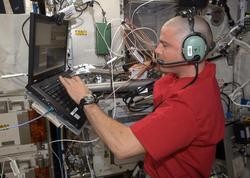
.gif) "It was such an out-of-the-world experience having a voice contact with Wiseman, surrounded by many club members," Ghodke posted. "Due to the uncertainty of his possible on-the-air operation, we were set up for both voice as well as the usual packet. And we were scanning both frequencies every few seconds. When we started 'hearing voices,' we were so excited that it never occurred us to make a voice recording. This is a once-in-a-lifetime contact."
"It was such an out-of-the-world experience having a voice contact with Wiseman, surrounded by many club members," Ghodke posted. "Due to the uncertainty of his possible on-the-air operation, we were set up for both voice as well as the usual packet. And we were scanning both frequencies every few seconds. When we started 'hearing voices,' we were so excited that it never occurred us to make a voice recording. This is a once-in-a-lifetime contact."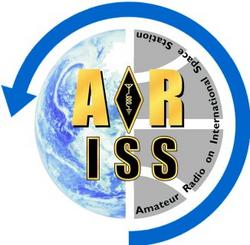 went crazy when we heard him come back to me. In particular, there was a young father and son visiting our Field Day location, [and] the little boy was jumping around." Wiggins said his only regret was that he had worked NA1SS with the Field Day station's W7V call sign and not his own. He said he'd dreamed of working NA1SS ever since seeing the ISS pass overhead one evening in 2009.
went crazy when we heard him come back to me. In particular, there was a young father and son visiting our Field Day location, [and] the little boy was jumping around." Wiggins said his only regret was that he had worked NA1SS with the Field Day station's W7V call sign and not his own. He said he'd dreamed of working NA1SS ever since seeing the ISS pass overhead one evening in 2009..jpg) "Anyone filing an application [who] is found to be delinquent in debt owed to the FCC and who fails to pay the debt in full or make other satisfactory arrangements in a timely manner will have their application dismissed," said the
"Anyone filing an application [who] is found to be delinquent in debt owed to the FCC and who fails to pay the debt in full or make other satisfactory arrangements in a timely manner will have their application dismissed," said the 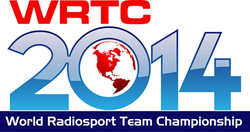 called "a significant financial grant" on June 22. The grant will help to support WRTC-2014's public relations effort to use the event to promote Amateur Radio to the general public. An international competition involving 59 teams of radio contesters, WRTC-2014 will take place July 8-14, with on-the-air activity taking place July 12-13, concurrent with the
called "a significant financial grant" on June 22. The grant will help to support WRTC-2014's public relations effort to use the event to promote Amateur Radio to the general public. An international competition involving 59 teams of radio contesters, WRTC-2014 will take place July 8-14, with on-the-air activity taking place July 12-13, concurrent with the 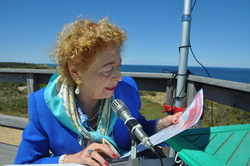
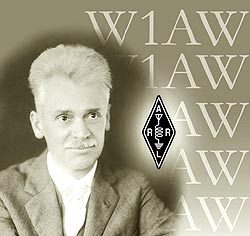 The
The 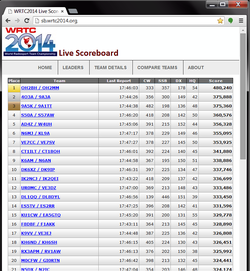
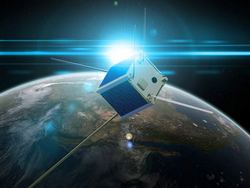 "We hope the signal should be even better now, as the satellite is descending steadily to 300 km and wish you all good QSOs!" he said.
"We hope the signal should be even better now, as the satellite is descending steadily to 300 km and wish you all good QSOs!" he said.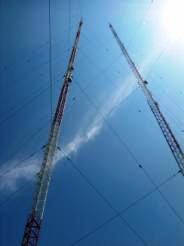
 Radio Free Asia (RFA) broadcasts. The Broadcasting Board of Governors (
Radio Free Asia (RFA) broadcasts. The Broadcasting Board of Governors (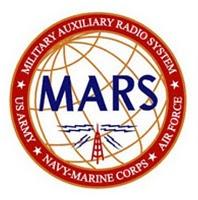 interoperability in cross-border emergencies. The June 6-7 exercise also had a historical aspect -- to commemorate the role of HF radio in the D-Day landings of 1944. Joining MARS stations in the US and Europe in the drill were the Canadian Forces Affiliate Radio System (CFARS) and units of the British Defence Ministry's Combined Cadet Force. Replicating beachhead communications on D-Day, the operation called for using minimal power and simple wire antennas in a friendly competition to make the most contacts. Army MARS Headquarters Operations Officer David McGinnis, K7UXO, who created the drill scenario, dubbed it "Operation QRPX" -- the "X" for "exercise."
interoperability in cross-border emergencies. The June 6-7 exercise also had a historical aspect -- to commemorate the role of HF radio in the D-Day landings of 1944. Joining MARS stations in the US and Europe in the drill were the Canadian Forces Affiliate Radio System (CFARS) and units of the British Defence Ministry's Combined Cadet Force. Replicating beachhead communications on D-Day, the operation called for using minimal power and simple wire antennas in a friendly competition to make the most contacts. Army MARS Headquarters Operations Officer David McGinnis, K7UXO, who created the drill scenario, dubbed it "Operation QRPX" -- the "X" for "exercise."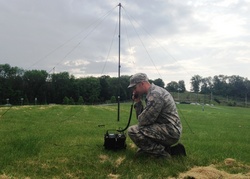
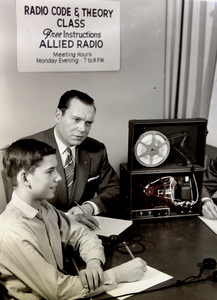
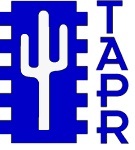 Last Call for Digital Communications Conference Papers: July 14 is the deadline to submit papers for the proceedings of 2014
Last Call for Digital Communications Conference Papers: July 14 is the deadline to submit papers for the proceedings of 2014 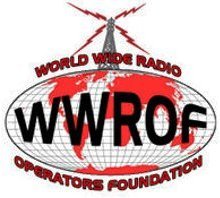 World Wide Radio Operators Foundation Sponsoring WRTC-2014 Preview Webinar: A World Radiosport Team Championship 2014 (
World Wide Radio Operators Foundation Sponsoring WRTC-2014 Preview Webinar: A World Radiosport Team Championship 2014 (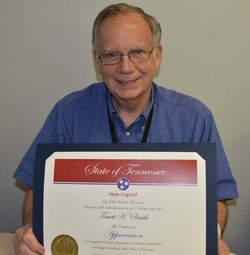 Volunteer Examiner Recognized by Governor of Tennessee: ARRL VEC Volunteer Examiner Butch Smith, N4TK, has received a Certificate of Appreciation from the Governor of Tennessee, on behalf of the Nashville VE Team. Smith is one of the founding members of the team, which has been continuously offering Amateur Radio exams since 1986. Smith maintains the VE team website and delivers the "official opening remarks" at test sessions. -- Thanks to Jiro Oi, KW6A
Volunteer Examiner Recognized by Governor of Tennessee: ARRL VEC Volunteer Examiner Butch Smith, N4TK, has received a Certificate of Appreciation from the Governor of Tennessee, on behalf of the Nashville VE Team. Smith is one of the founding members of the team, which has been continuously offering Amateur Radio exams since 1986. Smith maintains the VE team website and delivers the "official opening remarks" at test sessions. -- Thanks to Jiro Oi, KW6A 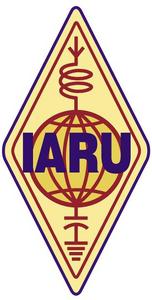 NU1AW, W100AW Will Be on the Air for IARU HF Championship/WRTC-2014 Events: IARU club station NU1AW will be on the air for the
NU1AW, W100AW Will Be on the Air for IARU HF Championship/WRTC-2014 Events: IARU club station NU1AW will be on the air for the  Defect Discovered in Latest QST iOS App: The QST iOS app was recently updated, but the ARRL has been notified by the app vendor that a serious defect has been discovered that may cause the app to stop functioning. ARRL is in discussions with the vendor to alleviate the problem. Until a solution has been found, however, members are urged to avoid updating their QST iOS apps. This issue does not impact QST Android app users.
Defect Discovered in Latest QST iOS App: The QST iOS app was recently updated, but the ARRL has been notified by the app vendor that a serious defect has been discovered that may cause the app to stop functioning. ARRL is in discussions with the vendor to alleviate the problem. Until a solution has been found, however, members are urged to avoid updating their QST iOS apps. This issue does not impact QST Android app users.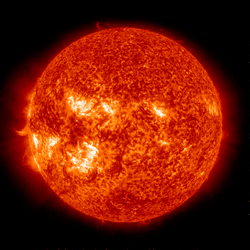 The latest short-term prediction shows solar flux at 175 on July 3, 180 on July 4-7, 175 on July 8-9, 170, 165 and 150 on July 10-12, 130 on July 13-15, 110 on July 16-17, 115 on July 18, then declining to 90 on July 23-24, rising to 165 on August 7, and declining to 100 on August 15-16.
The latest short-term prediction shows solar flux at 175 on July 3, 180 on July 4-7, 175 on July 8-9, 170, 165 and 150 on July 10-12, 130 on July 13-15, 110 on July 16-17, 115 on July 18, then declining to 90 on July 23-24, rising to 165 on August 7, and declining to 100 on August 15-16.







